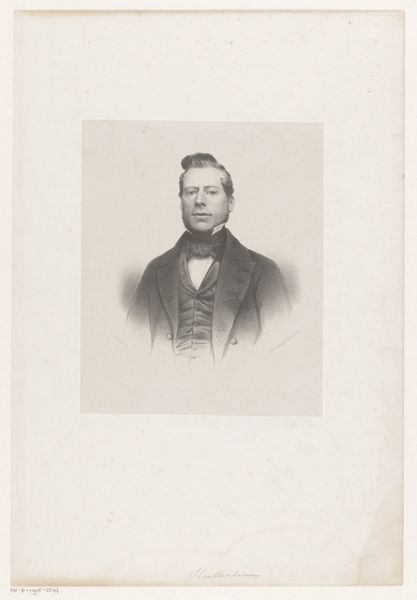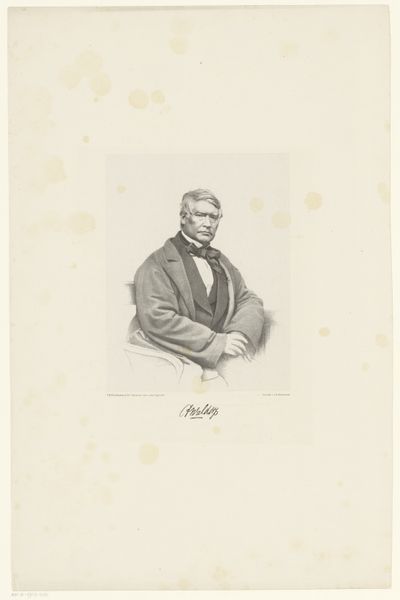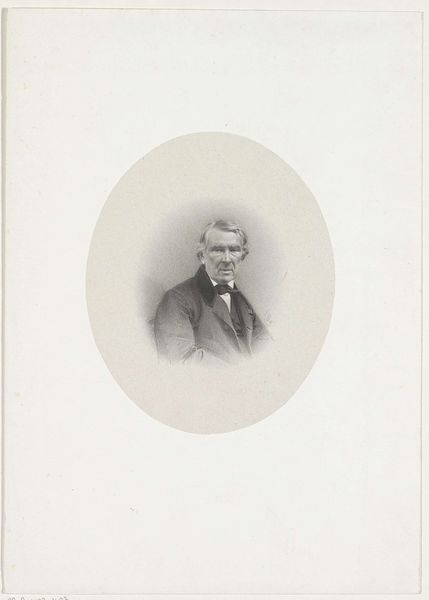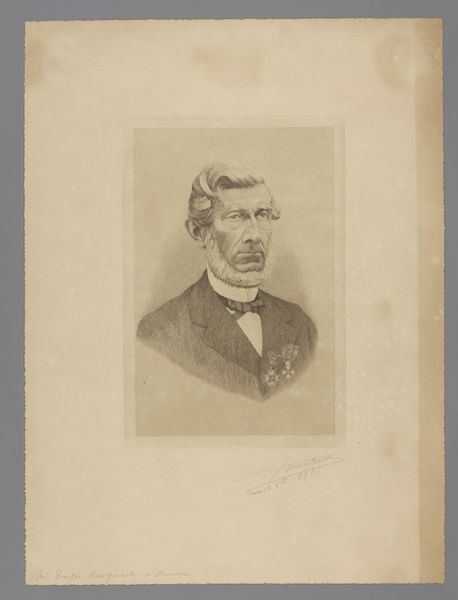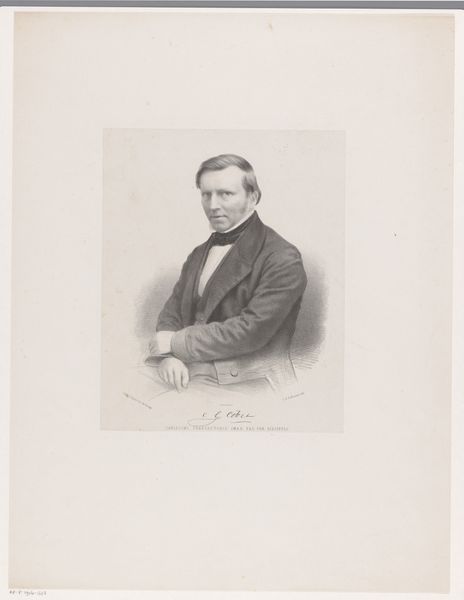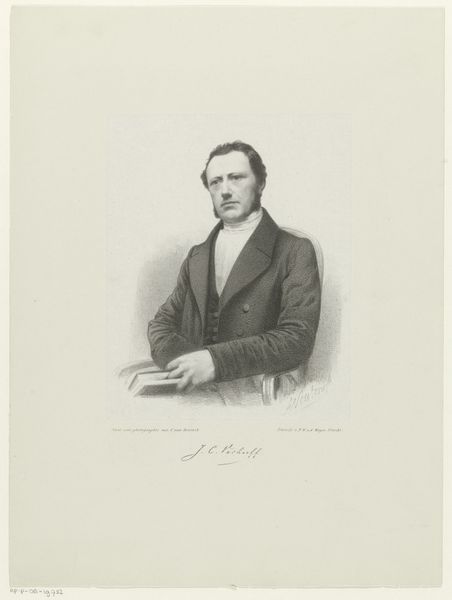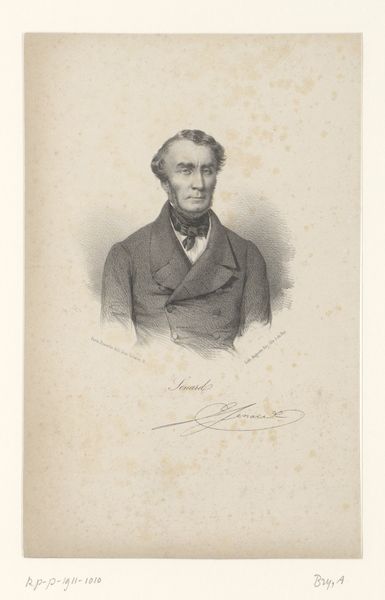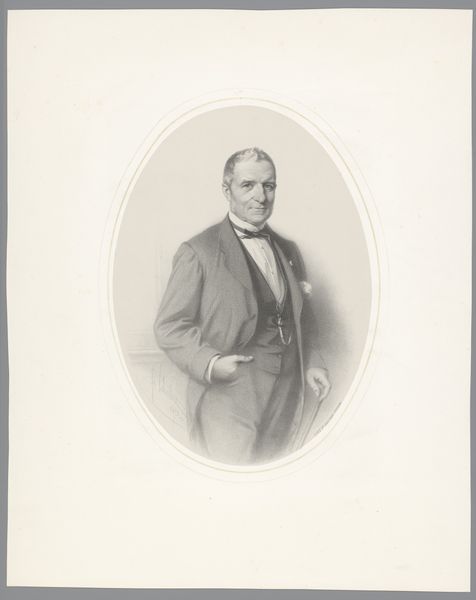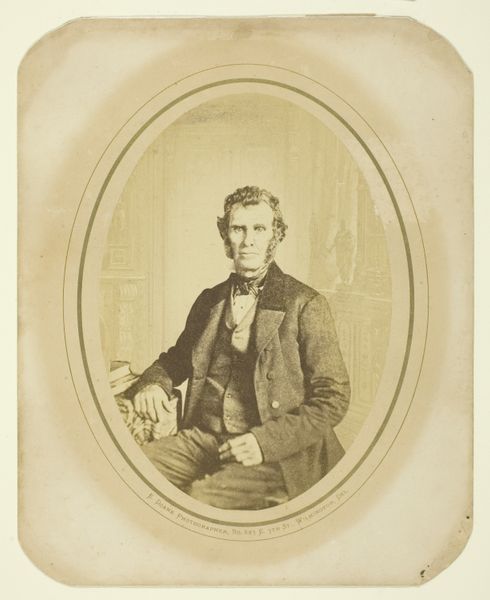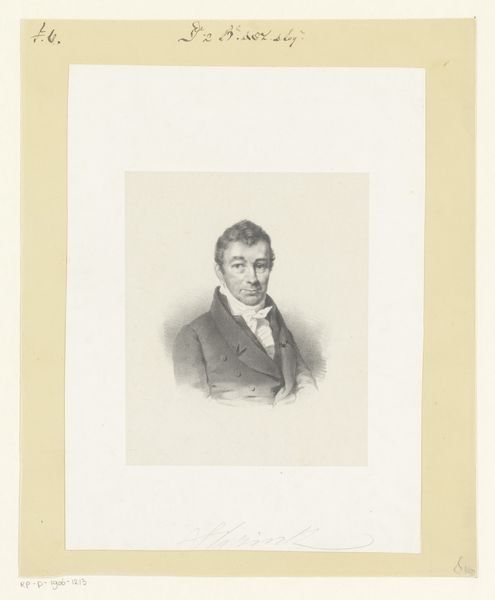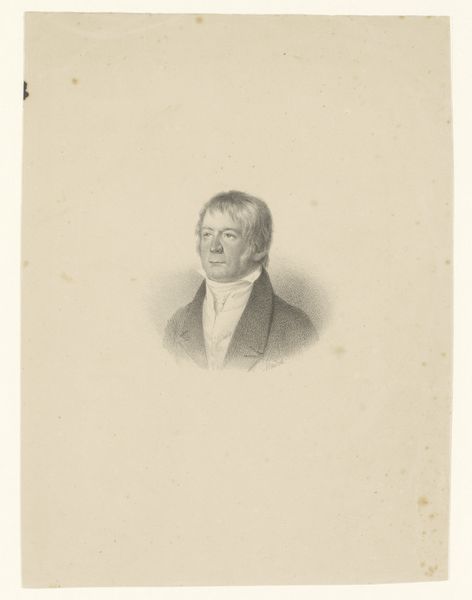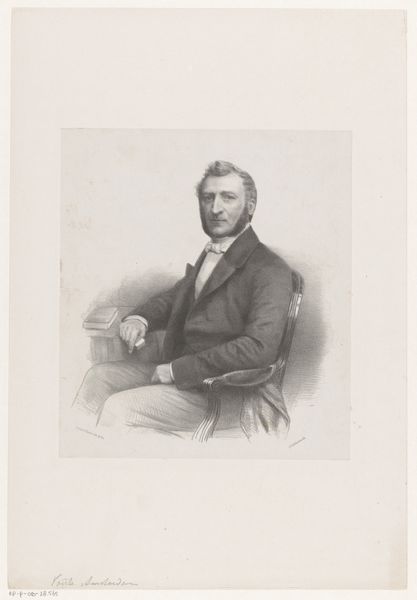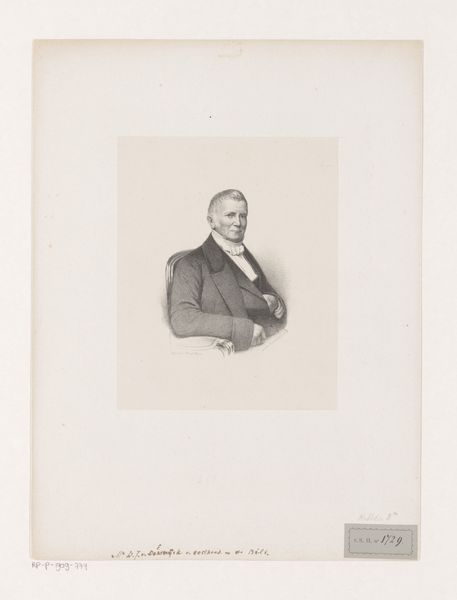
print, graphite
#
portrait
# print
#
romanticism
#
graphite
#
academic-art
#
realism
Dimensions: height 553 mm, width 365 mm
Copyright: Rijks Museum: Open Domain
Bernardus Theodorus van Loo made this portrait of Daniel Jacob van Ewijck van Oostbroek van de Bilt using lithography. Portraits in the Netherlands during the 19th century served to solidify the social standing of the sitter. Looking at the details, such as the somewhat severe expression, the tightly knotted cravat, and the formal attire, we can infer that van Ewijck was a man of some consequence. The lithographic technique itself played a role in the social landscape, as it allowed for the mass production of images. The lack of ostentation in the portrait may reflect the values of Dutch society at the time, which emphasized modesty. To fully understand this work, one could delve into genealogical records, study the history of portraiture in the Netherlands, and explore the emergence of lithography as a means of mass communication. In doing so, we begin to appreciate how art is always embedded in social and institutional contexts.
Comments
No comments
Be the first to comment and join the conversation on the ultimate creative platform.
